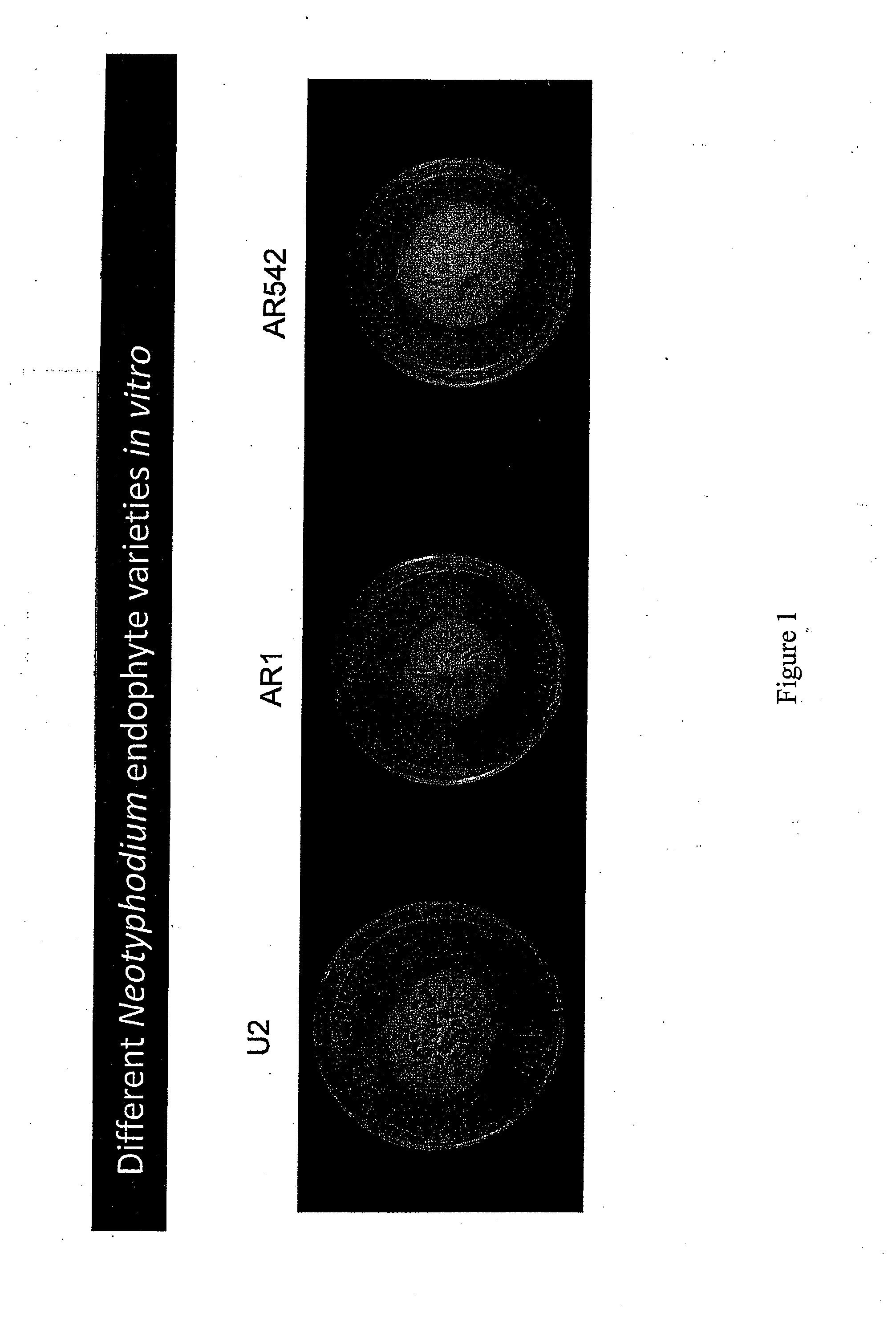Grass endophyte
a technology of endophytes and grasses, which is applied in the field of fungal endophytes, can solve the problems of poor reproductive capacity both in conception and bringing the fetus to term, low milk production, and low energy
- Summary
- Abstract
- Description
- Claims
- Application Information
AI Technical Summary
Benefits of technology
Problems solved by technology
Method used
Image
Examples
example 1
Isolation of Neotyphodium uncinatum, var. U2 and Comparison with Similar Strains
[0040]Neotyphodium uncinatum, var. U2 was isolated from line FP102 of Festuca pratensis (Meadow fescue). Line FP102 originally came from Norway in 1999. Characteristics for Neotyphodium uncinatum, var. U2 were determined and compared with other varieties. For these tests, the endophytic fungus isolated was cultured on 1.5% (w / v) potato dextrose agar at 20° C. in the dark (Christensen M J, Latch G C M, Tapper S A 1991: Variation within isolates of Acremonium endophytes from perennial ryegrasses. Mycol. Res. 95: 918-923). Length of cultivation was generally standardized at 4 weeks, but may be varied according to the isolate. Five plates of each strain were grown.
1) Colony: rate of growth
[0041]Colony radial diameter was measured (two diameters, at right angles, per plate) after 1 week's growth and again after 2, 3 and 4 weeks growth. Radial growth rate per day was calculated and rated “very slow”, “slow”, “...
example 2
Comparison of Neotyphodium uncinatum, var. U2 with Variety Neotyphodium Uncinatum, var. UNC1
[0055]The two varieties were similar in tested characteristics of colony sporulation, colony sectoring, colony color (upper surface), colony shape, colony immersion or margin in agar, colony texture, aerial mycelium density and type, and effect of benomyl on growth. The two varieties differed in colony shape and rate of growth. Neotyphodium uncinatum, var. UNC1 showed a strong growth rate while Neotyphodium uncinatum, var. U2 showed a medium growth rate. Colony shape differed as shown in FIG. 2.
PUM
| Property | Measurement | Unit |
|---|---|---|
| temperature | aaaaa | aaaaa |
| temperature | aaaaa | aaaaa |
| temperature | aaaaa | aaaaa |
Abstract
Description
Claims
Application Information
 Login to View More
Login to View More - R&D
- Intellectual Property
- Life Sciences
- Materials
- Tech Scout
- Unparalleled Data Quality
- Higher Quality Content
- 60% Fewer Hallucinations
Browse by: Latest US Patents, China's latest patents, Technical Efficacy Thesaurus, Application Domain, Technology Topic, Popular Technical Reports.
© 2025 PatSnap. All rights reserved.Legal|Privacy policy|Modern Slavery Act Transparency Statement|Sitemap|About US| Contact US: help@patsnap.com


